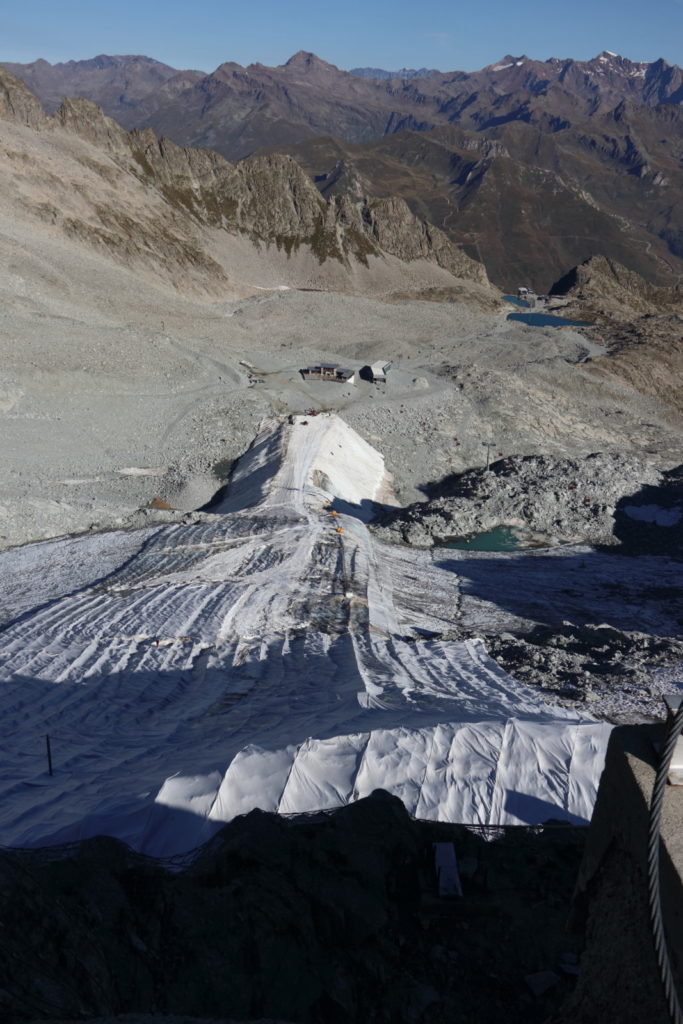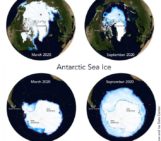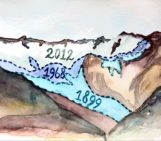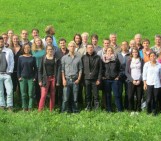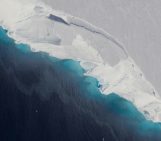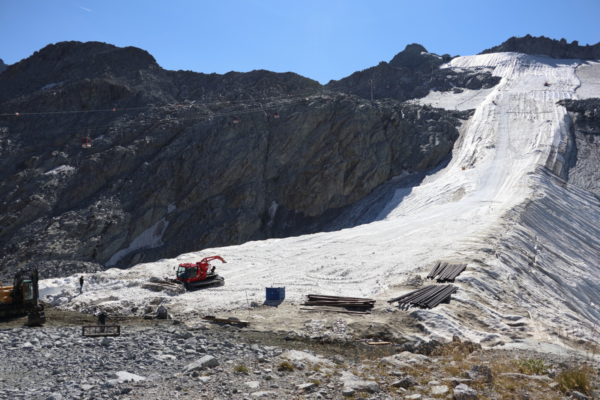
There are several ways that we can classify glaciers. We can look at their shape, their size, their type of terminus, and many other features. A new characteristic has recently been gaining in popularity: artificiality. Yes, we now have a few artificial glaciers! Have you ever heard about them? They are glaciers whose behavior is directly influenced by human interventions in order to improve their condition and lengthen their existence. Are they sustainable or a tool to counteract the effects of climate change? Definitely not, let’s discover why!
Definition
An artificial glacier is defined as a glacier that, given its geographic and climatic context, should have already disappeared or drastically reduced but survives because of artificial conservation efforts. Another name for these glaciers could be economic glaciers because the efforts made to slow down their decline are only related to economic interests, such as the preservation of snow for ski and glacier tourism.
A new glacial category
Most of the classifications developed to distinguish glaciers forget to mention the artificial glaciers as a category which only recently became important. Typically, glaciers are grouped according to their morphology, size or dynamic. Something that was once taken for granted is that glaciers are the expression of natural processes. Now it is becoming necessary to distinguish between natural and artificial glaciers, as the behavior of a few glaciers is directly influenced by our human interventions. We are already interfering with glaciers, since the current “artificial” climate is strongly impacting them, but when I talk about artificial glaciers I am not referring to this. I am referring to activities carried out at some glaciers to purposefully extend their life by actively slowing down their retreat.
How does a glacier turn into an artificial glacier?
The life of a glacier basically depends on two processes: (1) the accumulation of snow in winter and (2) ablation – the loss of snow and ice during the warm season. In a healthy stable glacier, these two processes are in balance. However, when accumulation prevails, a glacier expands (which becomes more and more rare today), while if ablation dominates, a glacier starts to retreat.
In artificial glaciers one or both of these processes are directly influenced by human activities. How does this take place? The two processes, accumulation and ablation, control the behavior of a glacier, so we have two possibilities (see Figure 2). (1) We can enhance and increase the accumulation of snow on the glacier, or (2) we can limit its snow or ice loss during summer.
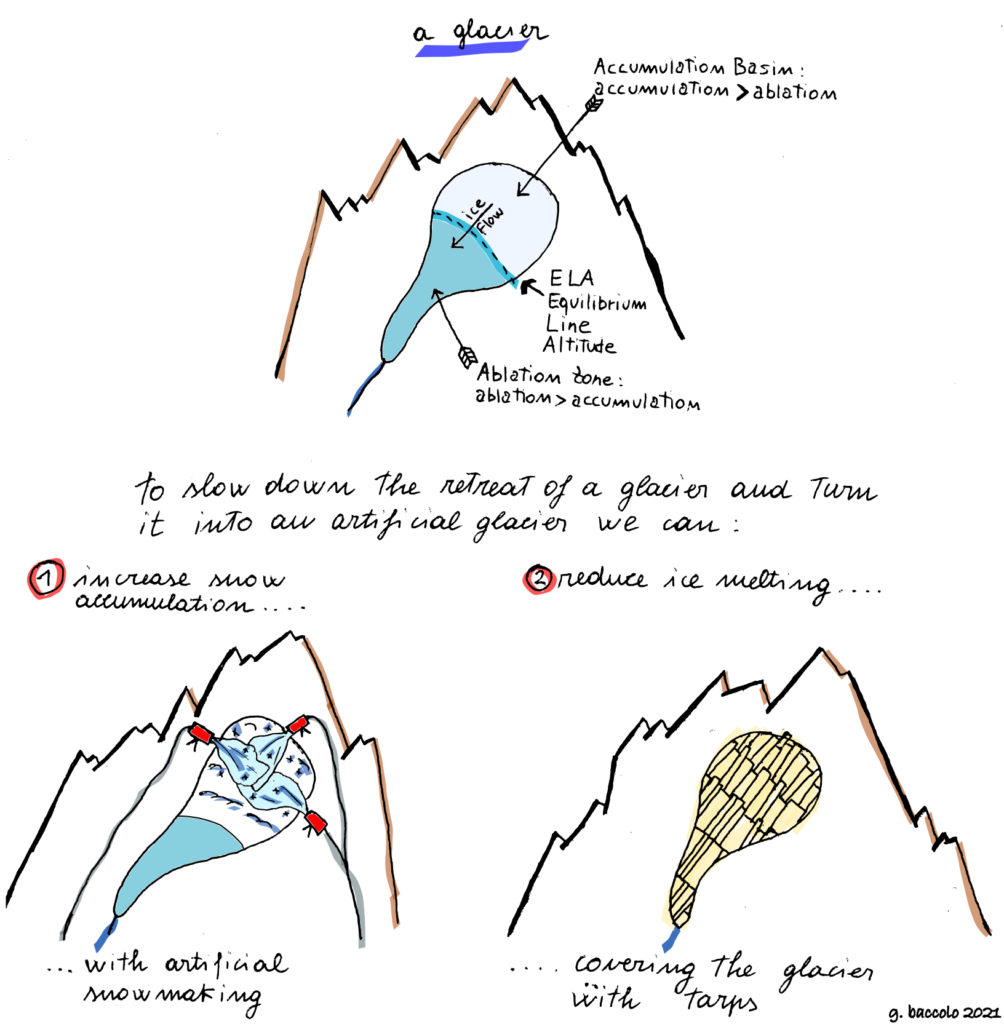
Figure 2. A schematic showing the basic dynamics of a glacier and how can we turn it into an artificial glacier to lengthen its lifespan. [Credits: Giovanni Baccolo]
Glacier-covering practices are probably most widespread in the Alps. In this mountain chain, there are a few glaciers where covering has been going on even for several years. Just to cite a few of them: Presena glacier (Figure 1 and 3), Rhone glacier, Diavolezza glacier, Gurschen glacier, Corvatsch glacier.
The Morteratsch glacier (a Swiss glacier) is the only glacier where the first option (to increase snow accumulation) has been proposed as a geo-engineering experiment. The idea is to artificially increase snowfall in the accumulation basin of the glacier through an intense artificial snowmaking program.
Artificial glaciers, why?
Now we know how to turn a natural glacier into an artificial one in order to slow down its decline, but we are still missing a key point. Why should people do that? Covering a glacier with white tarps or installing a huge system of snow guns is extremely expensive. Huss and colleagues (2021) estimated that to save a cubic meter of ice from melting costs 1-8 CHF on average (roughly the same amount in euros). You can easily imagine that saving a single m3 is an end in itself, a medium-large glacier in the Alps has a volume on the order of 1 km3, that is one billion m3 of ice. To observe an effect on the scale of a whole glacier you need to save tens of thousands of m3, each year for several years, resulting in a cost on the order of hundreds of thousands of euros for each site. Artificial glaciers are therefore extremely expensive to maintain, which is why only a few glaciers have been converted to artificial.
The only reason someone would accept to spend so much money is usually for the sake of economic profit. In most cases the reason that an artificial glacier is maintained is to save money when making artificial snow. Basically, most of the artificial glaciers host slopes for winter skiing. If you save snow and ice, you will also save some money in winter. This is because you will have to make less artificial snow during the skiing season, a production that is even more expensive than covering glaciers in summer. In fact, most of these operations are carried out by ski lift companies. Another reason to slow down the retreat of glaciers is to retain the glaciers as touristic attractions. When well visible and easily accessible, glaciers attract many tourists in the Alps from all over the world. Some resorts are worried about the negative impact that glacier disappearance will have on the local touristic economy and for this reason asked for studies such as the one involving the Morteratsch glacier.
An artificial glacier exists only because its existence saves more money than it costs. This is why we can also call them as economic glaciers.
What about sustainability?
When I see articles about artificial glaciers in the news, it is not uncommon to find a passage about the positive impact that such practices have on glaciers, improving their lifespan, slowing down their retreat, a sort of remedy against climate change. I always smile when I get to this point. Creating an artificial glacier is the total opposite of sustainability and has nothing to do with climate science. Let me explain.
I was once on an artificial glacier while workers were removing the tarps at the end of the summer season. It was not a reassuring experience or a vision of sustainability! The entire glacier was criss-crossed in tubes to transport water for the snow guns, and cables, to allow the snowcats to drive across the steep ice. Furthermore, after removal of the tarps, the surface of the glacier remained full of fiber detritus from the tarps themselves, fibers that then started trapping and accumulating dirt mobilized by meltwater. The glacier ended up being covered in a sort of artificial sediment (similar to cryoconite) consisting of tarp fibers and bits of plastic and metal from the tools used to fix the tarps to the ice. More than a glacier, it looked like the dirty sidewalk of a crowded city.
Moreover, let’s consider the emissions produced to maintain an artificial glacier. I don’t exactly know the amount of fuel burned by snowcats to place and remove the tarps, but I guess it is a lot, especially considering the steep terrain they travel on. In addition, to assess the environmental footprint of these practice, we should also take into account the production and disposal of the tarps. They can be reused for several years but they consist of non-woven polyester or polypropylene geotextiles, i.e. plastic material derived from oil (Senese et al., 2020). The creation of an artificial glaciers has evident negative environmental impacts. It produces large carbon emissions, pollutes significantly the glacier itself with plastic, and requires a notable amount of non-renewable resources.
Anthropogenic climate change is menacing the glaciers of Earth. As a glaciologist, I find that trying to save a few glaciers by producing additional emissions and pollution is a nonsensical practice from an environmental point of view. While it is temporarily useful for the local economy, no credit should be given to the idea that covering a glacier is a sustainable and eco-friendly measure.
Further reading
- Lässig (2021) Covering glacier ice: effective but expensive. Swiss Federal Institute for Forest, Snow and Landscape Research WSL News.
- Huss et al. (2021) Quantifying the overall effect of artificial glacier melt reduction in Switzerland, 2005–2019. Cold Regions Science and Technology 184:103237, DOI: 10.1016/j.coldregions.2021.103237.
- Senese et al. (2020) The non-woven geotextiles as strategies for mitigating the impacts of climate change on glaciers. Cold Regions Science and Technology 173:103007, DOI: 10.1016/j.coldregions.2020.103007.
- Rossi (2020) This glacier is melting fast. Can blasts of artificial snow save it? Wired.
- Mills (2019) Swiss glacier covered in tarpaulin to try and stop it melting. METRO-News.
- Oerlemans et al. (2017) Slowing down the retreat of the Morteratsch glacier, Switzerland, by artificially produced summer snow: a feasibility study. Climatic Change 145:189-203, DOI: 10.1007/s10584-017-2102-1.
Edited by Maria Scheel and Marie Cavitte
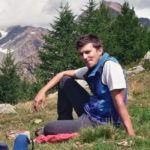 Giovanni Baccolo is a postdoc at the University of Milano-Bicocca, Italy. He studies glaciers to unveil the environmental and climatic pieces of information trapped within ice and snow. His research is mostly focused on ice geochemistry which he uses to study ice cores and supra-glacial processes. He tweets as @g_baccolo. Contact Email: giovanni.baccolo@unimib.it
Giovanni Baccolo is a postdoc at the University of Milano-Bicocca, Italy. He studies glaciers to unveil the environmental and climatic pieces of information trapped within ice and snow. His research is mostly focused on ice geochemistry which he uses to study ice cores and supra-glacial processes. He tweets as @g_baccolo. Contact Email: giovanni.baccolo@unimib.it

